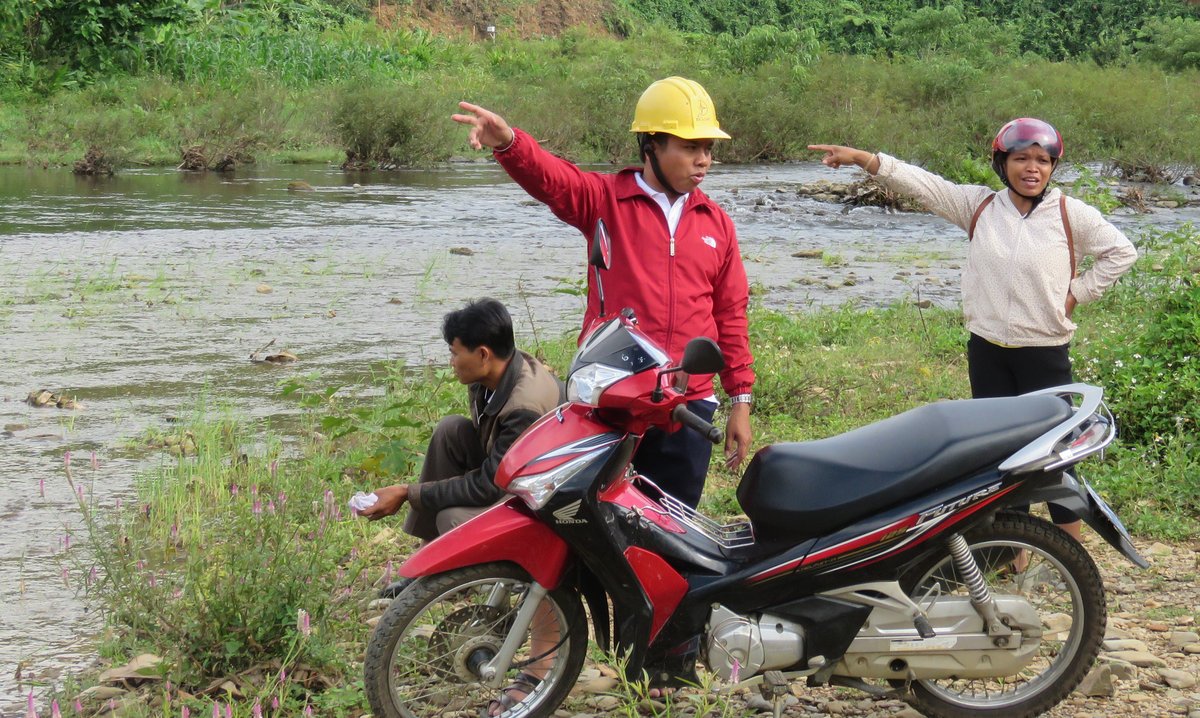Setting a good example and taking concrete action
by Philippe Randin, Director “Nouvelle Planète”, and Roman Twerenbold, Project Manager “Nouvelle Planète”*
Albert Schweitzer’s world view of “reverence for life” has been the guiding principle of “Nouvelle Planète” since its foundation 33 years ago: “I am life that wants to live, in the midst of life that wants to live; so I must be in reverence for all life.” We understand life in all its animal and plant forms. In our aid projects, which are carried out at the request of the communities, we therefore put emphasis on sustainable environmental protection.
Many projects in our countries of operation already contribute to climate protection. This aspect is becoming increasingly important as awareness of the destructive effects of climate change grows in local communities. For example in the Sahel zone, where village communities are asking us to help them reforest or save firewood in the face of desertification.
Priority Amazon
Our actions in collaboration with the indigenous communities in the Amazon region follow the same logic.
In today’s Peru, 15.4 million hectares of land are registered in the name of the indigenous communities. This represents 20% of the Peruvian Amazon, which in turn represents around 13% of the Amazon rainforest. One third of the securitised land has been protected thanks to the “Nouvelle Planète” projects. This corresponds to 520 million tonnes of bound carbon and an area larger than that of Switzerland.
We prefer to use photovoltaic solar energy for lighting or for driving the water pumps. In Vietnam, the promotion of biogas has made it possible to save wood and bind CO2. In Madagascar, reforestation is multiplying on the cleared hills. •
* “Nouvelle Planète” is a Swiss non-profit organisation founded in 1986, whose principles are based on political and denominational neutrality. It is active on two levels:
1) supporting the initiatives of population groups living in rural areas in Africa, Asia and Latin America to improve their living conditions and give them more autonomy while protecting the environment
2) organising outreaches that allow participants to discover other realities and ways of life that often seem far away. Exchange is the motto. For more details: www.nouvelle-planete.ch/index.php/de/ueber-uns
Source: Nouvelle Planète No 174 of September 2019
Contact address: Nouvelle Planète, avenue Charles-Dickens 2, 1006 Lausanne. E-mail: np@nouvelle-planete.ch, phone: 0041 (0)21 881 23 80, www.nouvelle-planete.ch/index.php/de/ueber-uns
Donations: PC 18-5792-6 / IBAN CH12 0900 0000 1800 5792 6 Keyword: “Brücke Vietnam”
Vietnam – access to the fields

RoTw. During the rainy season the farmers from Arec lose half of their crops this being due to the ensuing torrential river flow preventing access to their fields. Action is essential.
The ethnic minorities Co’-tu live on Vietnam’s high plain near the border with Laos. In the village of Arec the inhabitants cultivate nearly 1,200 ha of farmland. On average each household owns a field of 12 ha. This is equivalent to 17 football fields. The villagers grow rice, manioc and fruit. However, they are faced annually with a serious problem.
In the community house of Arec the village headman Nguy n Thanh Tâm explains to us: “We produce 66 tons of paddy rice and 7 tons of manioc per year. Our fields are located on the other side of the river. In order to get there, we have to cross the riverbed on foot. This is a difficult task to undertake as the banksides are very steep and slippery. During the rainy season it is simply impossible to cross the river. And there are no alternatives. Even if we were to cover several kilometres: there is no detour far and wide to overcome this obstacle.“
A loss of 33 tons of rice!
A farmer relates:“Our village is very frequently afflicted by heavy rains and this makes the access to our fields impossible for 6 months. That’s why we cannot harvest what we planted in the dry season. Thus, we lose up to 33 tons of rice and 3 tons of manioc. During the floods of 2011 every household lost about 520 kg of rice.“ These are dramatic losses for a population whose only source of food and income is agriculture.
Harvesting and freeing from isolation
The engineering appraisal has shown that the best solution is a suspension bridge with ferroconcrete embedded reinforcement. Metal plates which are more solid and long-lasting than wood will allow the villagers to use their two-wheeled vehicles to transport their crops. The construction of the bridge will maximise the crop yield thus allowing villagers to store part of the food for their own needs and sell the other part in the main village of the community which is 2 km away.
But the bridge construction will also bring further advantages, as this will free a village some 17 km north of Arec from isolation. Its 107 inhabitants will finally be able to go to the community healthcare centre all year round. The construction of the bridge will address two major problems affecting the region and its inhabitants. The ethnic minorities who live in villages like Arec in remote areas, rarely benefit from such investment.